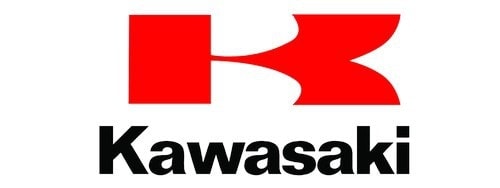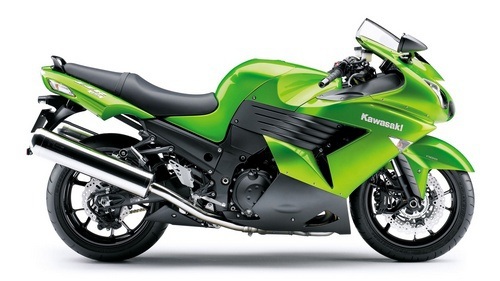The Marketing mix of Kawasaki Motorcycles analyses the 4Ps of Kawasaki Motorcycles, which include the Product, Price, Place, and Promotion of Kawasaki Motorcycles. Kawasaki Motorcycles is a subsidiary of its parent company, Kawasaki Heavy Industries Limited. It is a public company of Japanese origin. Kawasaki Motorcycles is associated with the automotive industry and deals in manufacturing and marketing motorcycles.
Manufacturing of motorcycles was at first undertaken by Kawasaki Aircraft under the Meguro name. Later, this name was changed to Kawasaki Motor Sales, and in 1963, Kawasaki Motorcycle Limited Company was formed. It faces competition from companies like
- Suzuki
- Yamaha
- Honda Motor Company
- Bajaj Auto Limited
- Harley Davidson
- Hero MotoCorp
- TVS Motor Company
About Kawasaki Motorcycles
- Type: Motorcycle manufacturer
- Industry: Automotive
- Founded: 1963
- Founders: Shozo Kawasaki
- Headquarters: Minato, Tokyo, Japan
- Area served: Worldwide
- Current CEO: Shinya Kagami
- Number of employees: 36,000 (2022)
- Major products: Motorcycles, ATVs, side-by-sides, watercraft, jet skis, and personal watercraft
Table of Contents
Kawasaki Motorcycles Product Strategy
Kawasaki Motorcycles is one of the most popular motorcycle brands globally. The company started its operations by manufacturing motorcycle engines and finally, in 1954, rolled out its first bike, called Meihatsu. Later, the company started rolling out products under its brand name. Some of the products in its portfolio are as follows-
Cruiser
- Vulcan 1500 Drifter
- Eliminator
- Kawasaki Estrella
- Kawasaki 454 LTD
Dual Purpose
- Kawasaki F1TR
- Super Sherpa
- KE100
- KLX400SR
Off-Road
- KD100
- KDX125
- KLX110
- KLX300R
- KMX 125/200
Street Bikes
- ZZR1400
- Versys
- S2 Mach II 350
- Kawasaki KSR110
- A7 Avenger 350
- A1 Samurai 250
- Eliminator 125
Sport Bikes
- Kawasaki Ninja ZX-12R
- Ninja 1000
- Ninja 650R
- Ninja 250R
Scooters
- J300 Special Edition
Sport-Touring
- Voyager 1700
- Concours 14/1400GTR
The product mix of Kawasaki Motorcycles in 2023 is as follows(Source)
- Sport Bikes: These are high-performance motorcycles designed for speed and agility. Kawasaki’s Ninja series, including models like the ZX-6R and ZX-10R, are well-known in this category.
- Touring Bikes: Designed for long-distance travel, these bikes offer comfort and storage capacity. Models like the Kawasaki Vulcan might fall into this category, providing a blend of power and comfort for extended rides.
- Off-Road Bikes: These are designed for off-road riding. Kawasaki offers models like the KX series for motocross and the KLX series for off-road and trail riding.
- Dual-Purpose Bikes: These motorcycles are designed for both on-road and off-road use. The Kawasaki Versys and KLR models offer versatility for different riding conditions.
- Cruisers: Focused on a relaxed riding posture and stylish design, cruiser bikes like the Kawasaki Vulcan are popular among those who prefer a laid-back riding experience.
- Super Sport Bikes: These are ultra-high-performance versions of sports bikes, often used in professional racing. The Kawasaki Ninja H2 series, known for its supercharged engines, is a notable example.
- Electric Motorcycles: As of my last update, Kawasaki was also exploring the electric motorcycle segment, though its offerings might be limited compared to their traditional combustion engine models.
- Beginner Bikes: Kawasaki also offers motorcycles suitable for beginners, with lower power output and easier handling. The Ninja 400 and Z400 are examples that cater to new riders.
Kawasaki Motorcycles Place Strategy
Kawasaki Motorcycles is a world-famous brand that has spread its presence from Japan to several countries worldwide. In 1960, it opened its headquarters in Chicago and later established the American Kawasaki Motorcycle Corporation. Kawasaki Motorcycles’ manufacturing occurs at its facilities in Thailand, Indonesia, USA, and Japan by the motorcycle and engine division of its parent company, Kawasaki Heavy Industries. It has a research and development division in Michigan. Kawasaki Motorcycles has created a robust and widespread network for distributing its products in international markets.
During its early years in the United States, it entered into negotiations with private companies, and later, the company started creating its unified distribution channel with the help of dealerships and regional sales offices. In the USA, these are located in Georgia, Atlanta, New Jersey, Fort Worth, and Texas. It also has an engine manufacturing plant in Maryville, Missouri.
The place strategy of Kawasaki motorcycles is as follows:
- Global Dealership Network: Kawasaki maintains a widespread network of authorized dealerships globally, ensuring their motorcycles and services are accessible in significant markets across continents.
- Online Presence and E-Commerce Platforms: Kawasaki leverages digital platforms for marketing and sales, providing customers with detailed product information, online booking options, and direct purchase capabilities.
- Service Centers and Spare Parts Availability: Kawasaki strongly emphasizes after-sales support, with a network of service centers and ready availability of spare parts, enhancing customer satisfaction and brand loyalty.
- Partnerships with Local Distributors: In many regions, Kawasaki partners with local distributors to facilitate the distribution and servicing of their motorcycles, adapting to regional market dynamics and consumer needs.
- Participation in International Motor Shows and Events: Kawasaki actively participates in international motor and motorcycle events, showcasing their latest models and technology. This helps maintain a strong brand presence and attract potential customers.
Kawasaki Motorcycles Pricing Strategy
Kawasaki Motorcycles’ production process and method combines American and Japanese techniques. It has offered its customers the best possible product, with innovative features and ultra-modern technology. Kawasaki provides a diversified product portfolio and has maintained the prices of its motorcycles depending on their various features.
It has adopted a value-based pricing system and has thus kept prices of all its products accordingly. Compared to its competitors’ products, Kawasaki Motorcycles has adopted a premium pricing policy for its premium products. This has proved to be a success for the brand because its clients realize that the company is offering something new and different, and they are willing to pay extra for this privilege.
Kawasaki Motorcycles employs a strategic pricing approach that reflects its brand positioning and target market objectives. Here’s an overview of their price strategy:
- Premium Pricing for High-End Models: Kawasaki’s high-performance models, such as the Ninja H2 series, are priced at a premium. This strategy reflects the advanced technology and superior performance these bikes offer and helps position Kawasaki as a leader in the high-end motorcycle segment.
- Competitive Pricing for Entry-Level and Mid-Range Models: Kawasaki adopts a competitive pricing strategy for entry-level and mid-range models like the Ninja 400 or the Z650. This makes these models accessible to a broader audience, including beginners and everyday riders, while still maintaining a perception of quality.
- Value-Based Pricing: Kawasaki’s pricing often reflects a value-based approach, where the features, technology, and brand reputation justify the cost of the motorcycles. This strategy appeals to customers seeking a balance between price and quality.
- Segmented Pricing for Different Markets: Understanding global market variations, Kawasaki adjusts its pricing based on regional economic factors, taxation, and customer purchasing power. This localized strategy helps in catering to different market sensitivities and demands.
- Seasonal and Promotional Pricing: Kawasaki also employs seasonal and promotional pricing strategies, offering discounts and finance options during certain periods or for specific models. This boosts sales during off-peak seasons and helps attract price-sensitive customers.
Kawasaki Motorcycles Promotion Strategy
Kawasaki Motorcycles is known for innovative and quality bikes. The company team has adopted several promotional activities to create and maintain a positive brand image in the consumer market. The company has been offering prompt and best possible customer service to impress its customers. It has launched several advertising campaigns that are shown via television channels, newspapers, magazines, billboards, and social media platforms.
Kawasaki Motorcycles employs a dynamic promotion and marketing strategy that includes a robust digital marketing presence across social media and online platforms to engage with a tech-savvy audience, extensive sponsorship and participation in motorcycle racing events to underline their performance and technological prowess, and collaborative marketing campaigns with dealers and partners for localized promotions and customer outreach. This multifaceted approach helps Kawasaki maintain a robust brand image and connect with diverse customer segments.
Under one of its marketing plans, the company issued a tagline, Intelligent Rebels, which proved to be a milestone for the brand. Kawasaki has been an avid and consistent participant in events and sports. It has proved its capability in several motorcycle events. The company’s first win was the FIM World Road Racing 125cc Championship under Dave Simmonds. This resulted in the creation of several off-road bikes that helped the brand win various other tournaments.
Some Recent Video ads and Print ads of Kawasaki Motorcycles are:
Liked this post? Check out the complete series on Marketing Mix


Good day Sir/Madam please help me to open a dollar account